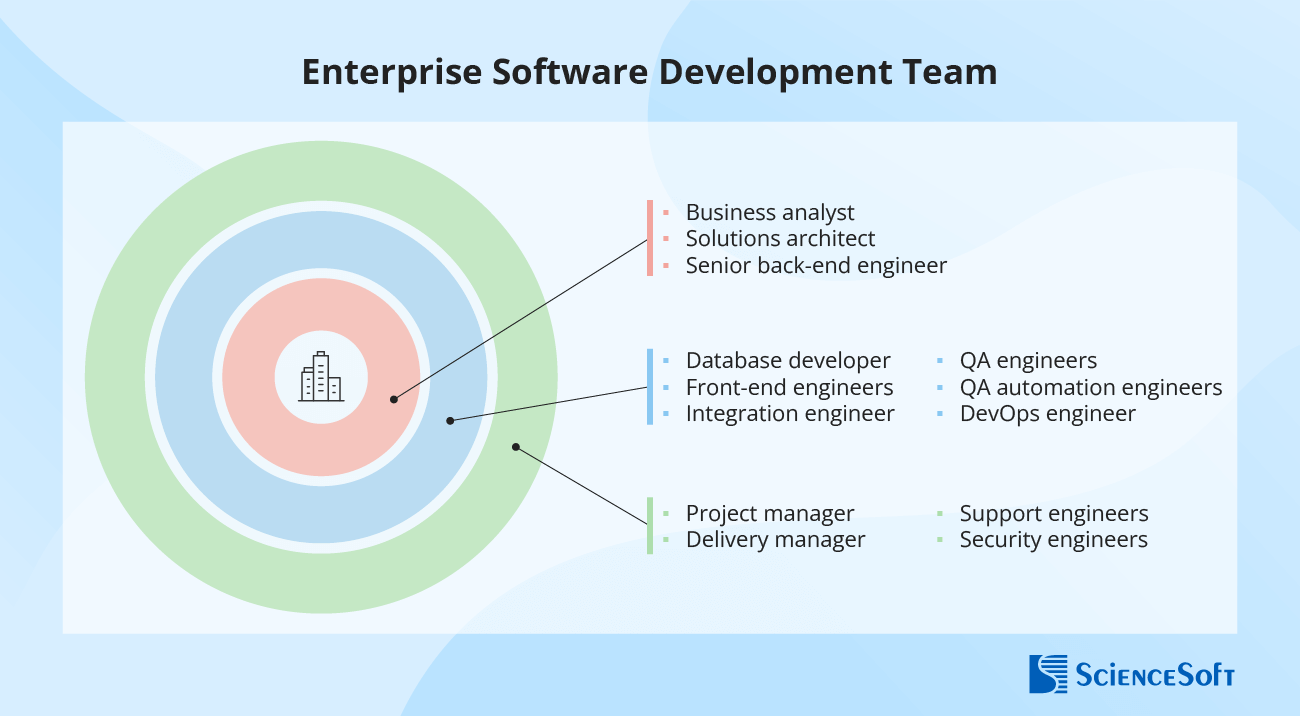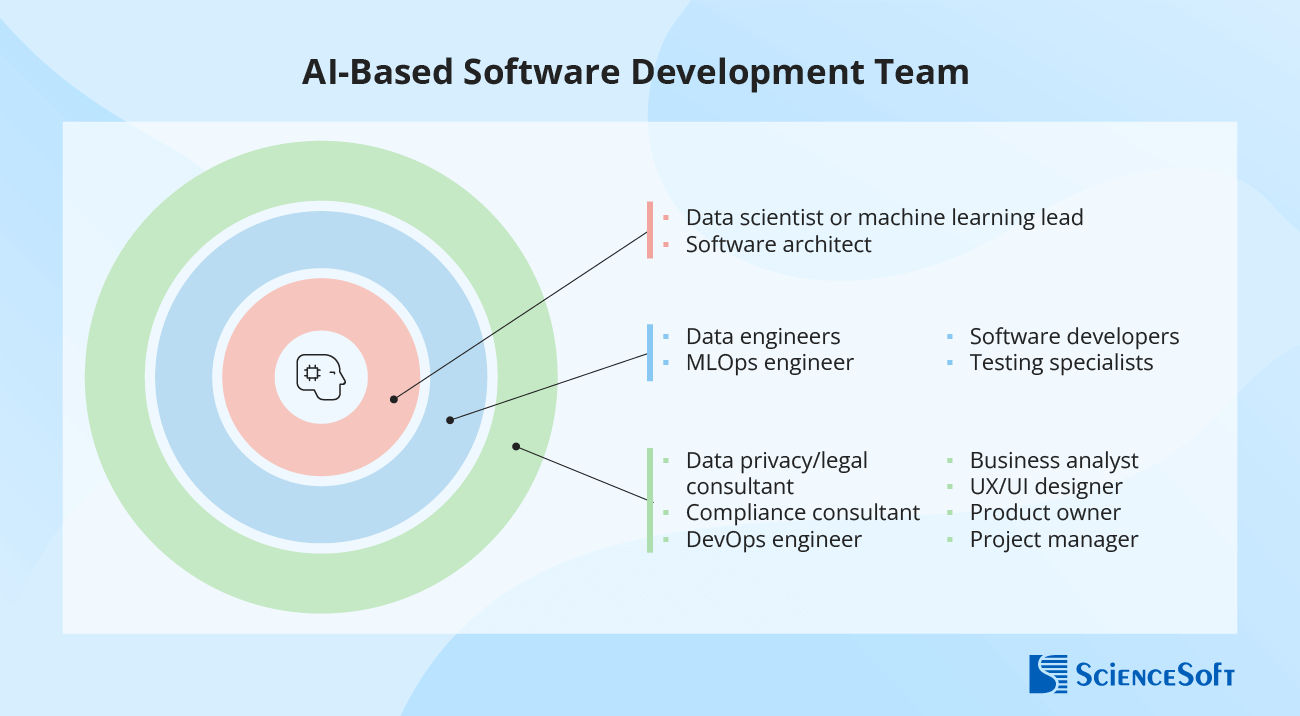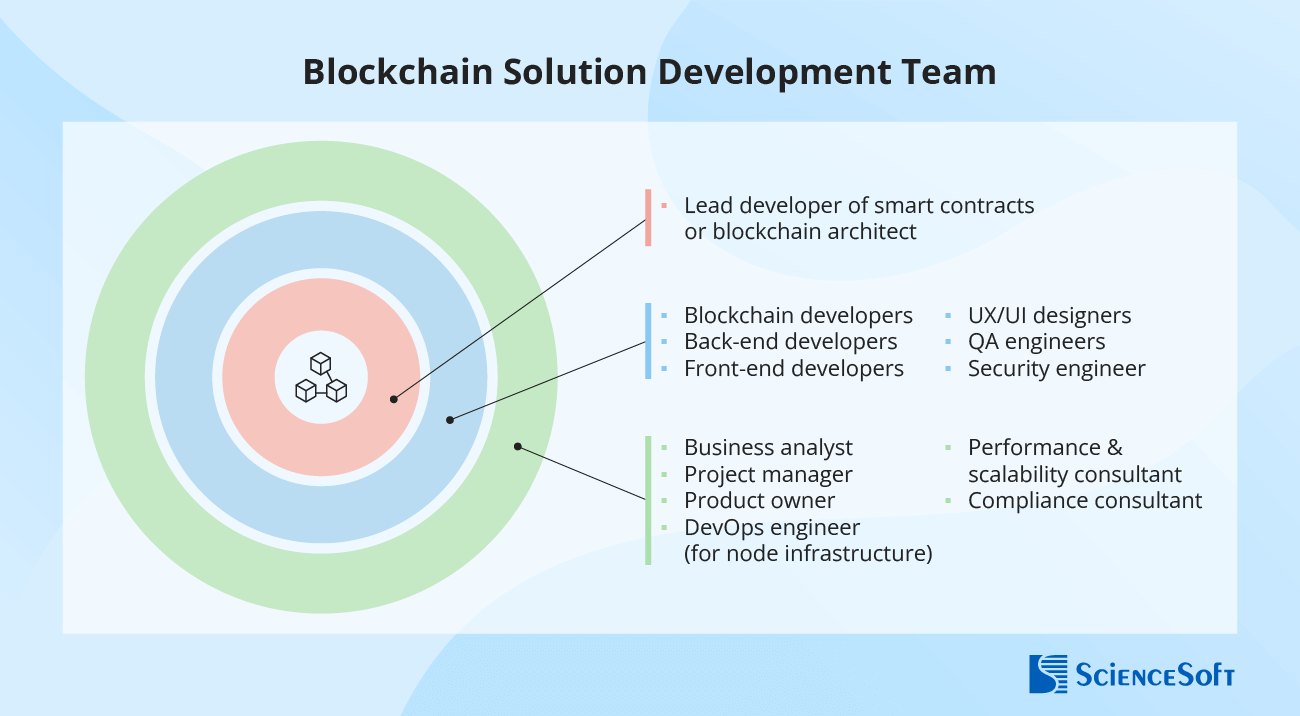10 Best Practices to Build a High-Performing Software Development Team
Even the most brilliant developers can’t deliver magic if their team is misaligned, roles are unclear, or processes are chaotic — whether the team is in-house or outsourced. Atlassian’s 2024 State of Developer Experience report reveals that 69% of developers lose eight or more hours per week due to inefficiencies — from fragmented workflows and poor planning to difficulty finding critical information. Even when leaders know the stakes, the disconnect is concerning: 86% of engineering leaders say improving developer experience is crucial, but only 44% of developers feel understood by those leaders. Translation: management wants speed, developers want clarity, and projects get stuck somewhere in the middle.
This article dives into three layers of effective software delivery that actually work for predictable, efficient, high-quality outcomes:
- Team layer: building a software development team that fits your project, with the right mix of roles, skills, and expertise.
- Process layer: сreating workflows and practices that boost productivity, so developers spend more time coding and less time chasing context.
- Сulture layer: fostering continuous improvement and a learning environment that keeps your team sharp, nimble, and a little less caffeinated.
Building a Software Development Team That Fits Your Project
1. Align skill focus with project goals and delivery requirements
There are three common types of development teams: generalists, specialists, and hybrid teams. Each shines in specific contexts but can stall in others. Generalists excel in small-to-medium projects or startups where flexibility and fast iteration matter. Specialists dominate in highly technical or complex initiatives, such as AI or cybersecurity-driven projects. Hybrid teams are ideal for mid-to-large projects requiring both depth and cross-functional coverage.

2. Accurately define what roles you need and when
The spectrum of team roles is determined by the project stage, scope, SDLC model, and the type of software to be developed. Defining roles accurately from the onset prevents critical competency gaps and avoids hasty team rearrangements down the road.
A basic development team usually includes a business analyst (BA), project manager (PM) or product owner (PO), solution architect, UX/UI designers, front-end and back-end developers, QA engineers, and DevOps. Depending on the project, you may also need security engineers, data scientists, compliance consultants, or other specialists.
Team composition also changes significantly at different stages of development. The table below shows typical team sizes, roles, and key outputs for each phase of development:
|
Stage |
Goals |
Typical team size |
Core roles |
Optional roles |
Key outputs |
|---|---|---|---|---|---|
|
Discovery |
Validate the problem, scope, and feasibility. |
2–4 |
PM, PO, tech lead/architect, BA |
Subject matter experts, senior UX/UI designers, security advisors, senior developers. |
Vision and scope document, solution architecture, prototype, feasibility study, initial backlog, project roadmap. |
|
MVP |
Deliver a working solution with core value. |
4–8 |
PM, PO, tech lead, 2–4 developers (often full-stack), UX expert, QA engineers (often only manual). |
DevOps or cloud engineer, data engineer (if data-heavy), compliance consultant. |
MVP app and basic CI/CD components. |
|
Full-scale software development |
Harden, scale, optimize, and evolve the app based on user feedback and changing business needs. |
6–20+ (usually divided into several subteams) |
Multiple squads of engineers, QA automation engineers, DevOps engineers/site reliability engineers, solution architect, and PM. |
Data scientists, compliance consultants, security engineers, performance engineers. |
Production releases, automated tests, and monitoring modules. |
Key insight: Early-stage projects require smaller, flexible teams, while full-scale development benefits from specialized, established subteams. Now, let’s see how team structures adapt to different types of SDLC models.
|
Traditional linear development (e.g., Waterfall framework) |
Scrum-based delivery |
Enterprise-level Agile delivery (e.g., SAFe framework) |
|---|---|---|
|
Requires strengthened roles:
|
Requires additional roles:
|
Requires additional roles:
|
Finally, let’s look at real-world examples of team structures for different software types:
- Enterprise software development team focuses on scalability, integrations, and robust architecture.

- Mobile medical app development team emphasizes security, regulatory compliance, and intuitive UX to ensure the protection of sensitive data.

- AI-based software development team needs data engineers, ML model specialists, and testing specialists to enforce rigorous testing at every stage.

- Blockchain solution development team requires expertise in cryptography, smart contracts, and distributed architectures.

3. Keep teams small and focused
Small teams are more productive because it’s easier to coordinate their efforts and recognize the individual contributions of their members. This is particularly important for Agile projects that emphasize individual input and assume frequent communication between the team members to quickly iterate on goals and address changes. So, don’t cram everyone into one team. Instead, create focused squads, each with its own lead. Based on ScienceSoft’s experience, the most efficient and predictable Agile teams have 5–7 members. When a project requires more people, divide them into several subteams and add a coordinating layer. This way, even 20+ engineers can move fast without chaos.
4. Hire for both skill and engagement
Don’t just fill roles, but also match people to the project’s needs. Assess technical skills, explanations of previous challenges solved, domain knowledge, and seniority. Evaluate soft skills, problem-solving, and genuine interest in your domain. Specialists who are curious and invested provide unexpected insights and drive better results.
5. Make sure you have a balanced set of informal roles
Beyond formal responsibilities, effective software teams thrive on a diverse set of informal roles. Intellectual leaders drive technical vision, social leaders foster collaboration and morale, idea generators spark innovation, and critics challenge assumptions. Ensure all these roles are present, not just one or two, to enhance discussion quality, strengthen self-management, and keep the team agile and resilient in the face of challenges.
Creating Work Processes That Actually Boost Productivity
After assembling the right team, productivity depends on how work flows, information moves, and bottlenecks are managed. Efficient processes reduce wasted effort and give the team clarity and ownership.
6. Leverage project management and workflow tools to the fullest
PM tools automate repetitive workflows, connect dependencies, and visualize progress. For example, a developer submits code for peer review, it’s approved, and automatically moves to QA. Everyone sees the status in real time, which boosts ownership and keeps deadlines realistic. Another example: a back-end developer’s feature may rely on an API being completed by another team. PM tools can highlight these dependencies, trigger notifications if a prerequisite task is delayed, and automatically adjust timelines or alert relevant team members. This way, you prevent surprises, reduce idle time, and ensure that blockers are addressed before they derail the schedule.
Recommended tools:
- Jira: agile planning, backlog management, and sprint tracking.
- ClickUp: сombines tasks, docs, dashboards, and automation.
- Wrike / Asana: visual boards and workflow automation for cross-team coordination.
7. Keep documentation relevant and easy to manage
Documentation is the project’s central nervous system. Up-to-date business specifications, technical specifications, UX guidelines, architectural decisions, coding standards, and meeting notes keep teams aligned and reduce friction. For outsourced development teams, it’s especially important to insist on regular development process documentation to avoid knowledge loss when new members join or vendors change.
Recommended tools: Confluence, SharePoint, Notion, Zoho WorkDrive.
8. Build transparent communication channels
Effective teams combine asynchronous updates with purposeful live interactions. Asynchronous updates (via Slack threads, Loom videos, or detailed emails) allow engineers to share progress, flag dependencies, and provide context without interrupting deep work. For example, a developer can record a 3-minute Loom explaining a code module’s status, which automatically informs dependent team members and triggers follow-ups if needed.
Live meetings should be strategic, not routine. Use them to resolve blockers, make decisions, or discuss complex topics that cannot be handled asynchronously. Avoid redundant or unfocused meetings: adopt a strict “no agenda, no meeting” policy, and ensure every session has a clear objective and outcome.
Tip: The balance between asynchronous and live communication may shift depending on whether your team is remote, hybrid, or returning to the office (see trends in developers’ return to office).
Recommended tools: Microsoft Teams, Zoom, Slack, Google Meet, Loom.
9. Have a policy on resolving conflicts
Even high-performing teams face friction. For conflicts and challenges, you should document a clear escalation process, depicting contact points, priority levels, preferred means of communication, and resolution timeframes. For larger or outsourced teams, a culture guide with a conflict resolution section always helps.
Fostering Continuous Improvements
Efficiency isn’t static. Even the best teams need continuous tuning to stay productive and aligned. Establishing clear metrics, feedback loops, and iterative improvements ensures your team never settles for “good enough.”
10. Define and measure KPIs that matter
Set measurable, actionable KPIs to track team performance, identify bottlenecks, and guide improvements. Examples include cycle time, deployment frequency, defect resolution speed, and stakeholder and team satisfaction. Check a sample set of metrics that ScienceSoft uses for measuring project health to get an idea of how your control framework may look. A robust KPI framework lets you spot friction points early, tune workflows, and maintain high motivation and accountability across the team. Regularly revisit and adjust KPIs to ensure they evolve with project demands and team growth.
Pro tip: KPIs are only useful if the team understands and trusts them. Share insights openly and tie metrics to actionable improvements rather than punishment.
Wrapping Up: Teams That Get It Done
A software development team is a living, breathing mechanism. Hire smart, hire engaged, and don’t waste time on people who just clock in. Small, focused squads, clear roles, and processes that actually work let your developers do what they were hired for: build software, not chase down information or wonder who’s responsible. And then never stop tuning. Measure what matters, kill what doesn’t, and steal ideas from teams that already crush it.

